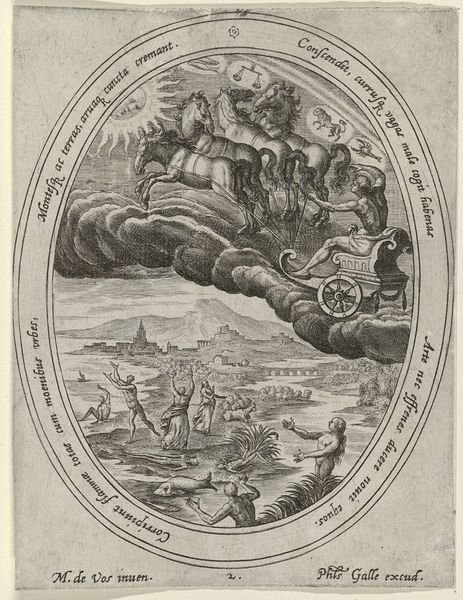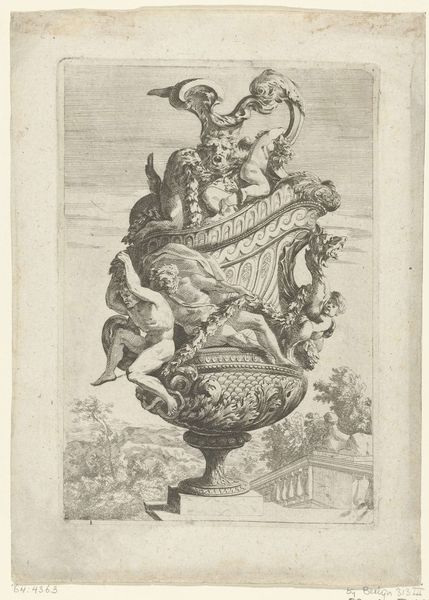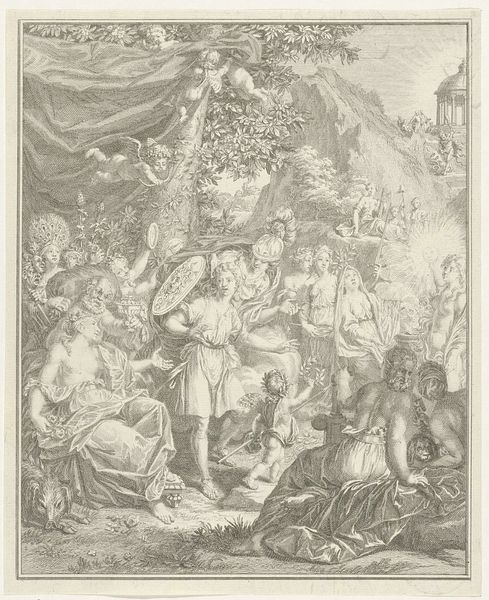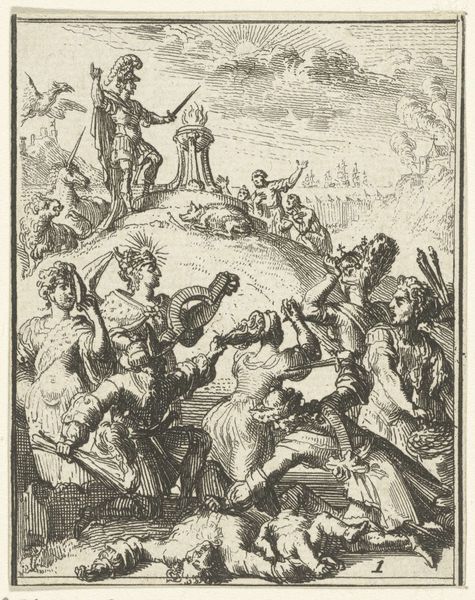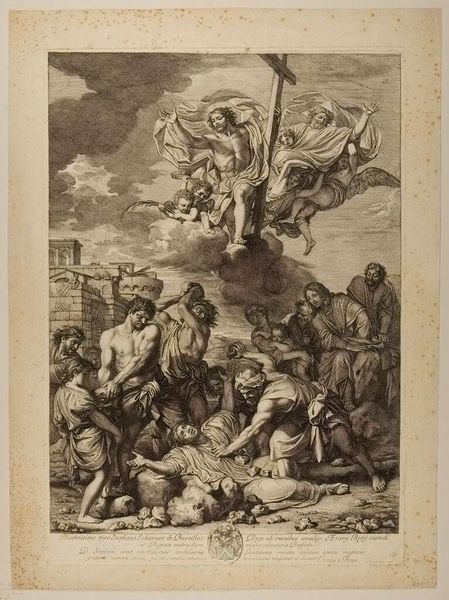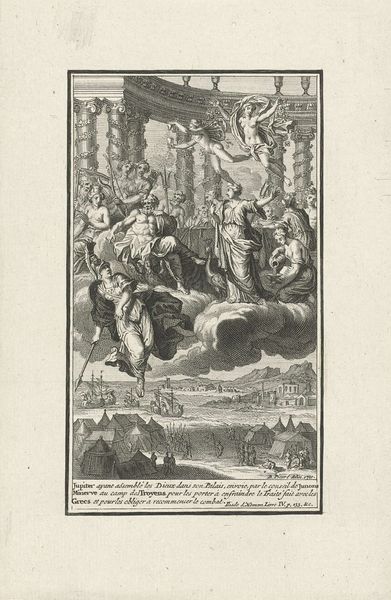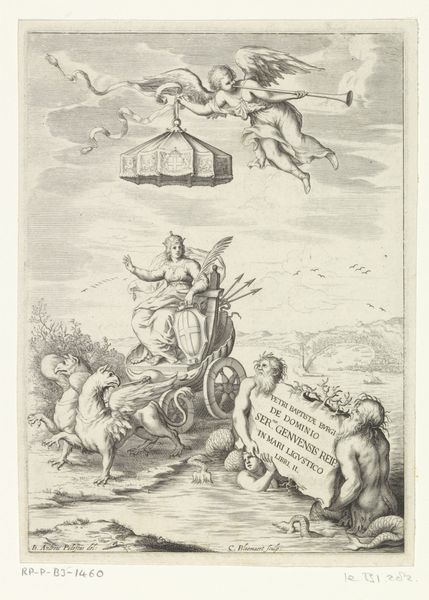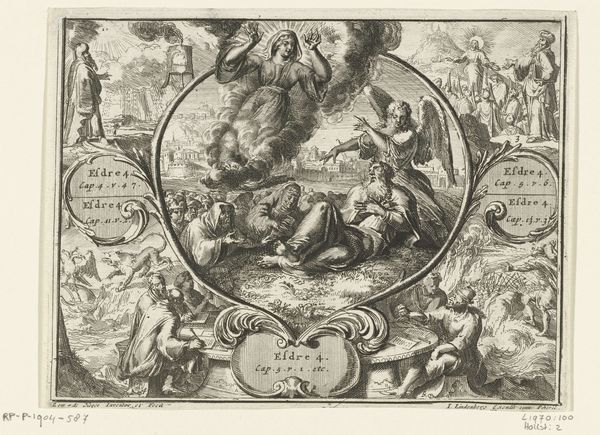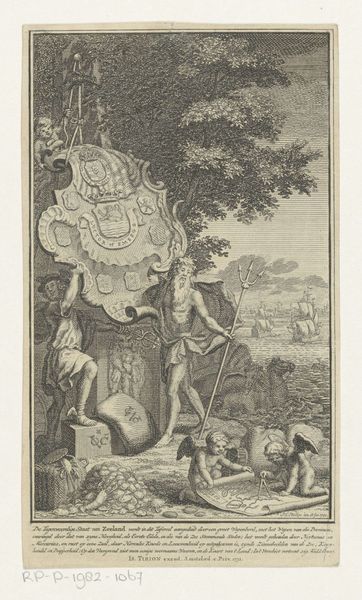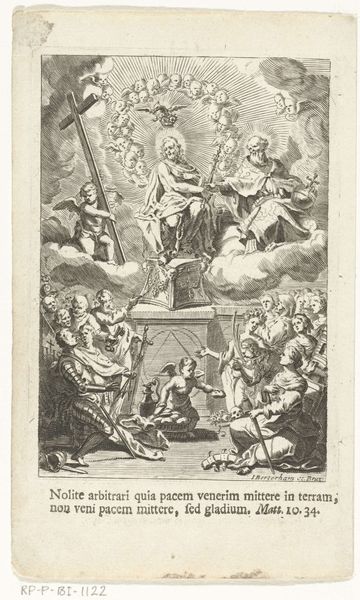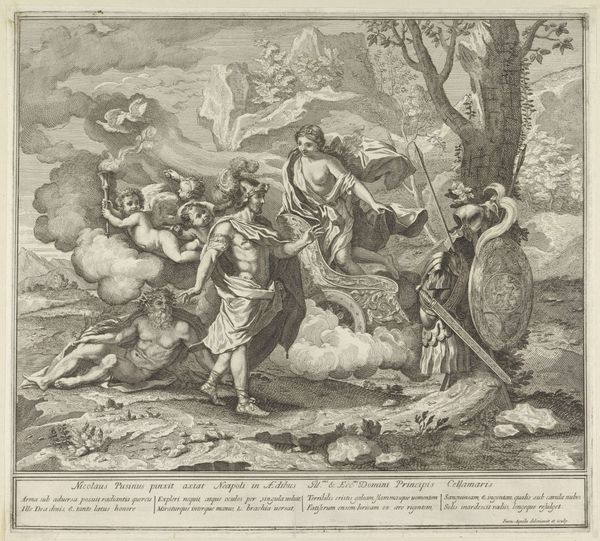
print, engraving
#
allegory
# print
#
mannerism
#
figuration
#
line
#
engraving
Dimensions: height 131 mm, width 100 mm
Copyright: Rijks Museum: Open Domain
Philips Galle engraved this print of Phaëthon and Apollo sometime between 1580 and 1612 in the Netherlands. It illustrates the classical myth of Phaëthon, who begged his father Apollo to let him drive the sun chariot, only to lose control and scorch the earth. The image creates meaning through its visual codes and cultural references. Galle was working in a time of great artistic and intellectual exchange. The flourishing print market enabled the wide dissemination of classical stories, rendered in a style that combined Northern realism with Italianate grace. As a result, this print reflects the humanist learning that was prized in elite circles, but also served a moralizing function, warning against hubris. To understand this image better, we might consult emblem books, classical texts, and the inventories of print collectors. In doing so, we can appreciate how art served as a vehicle for social and intellectual exchange in early modern Europe.
Comments
No comments
Be the first to comment and join the conversation on the ultimate creative platform.
